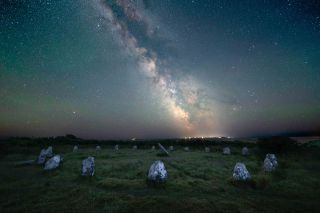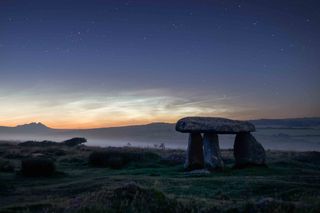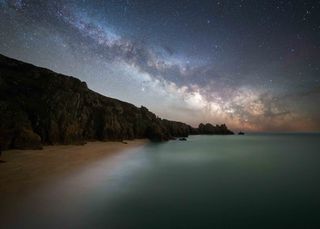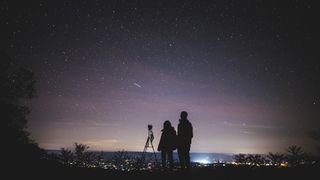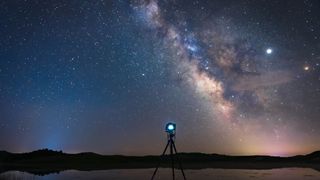Astrophotography for newbies: How to shoot the night sky
6 min readHave you been impressed by beautiful illustrations or photos of the Milky Way or other celestial objects and puzzled no matter whether you could capture identical pictures too? As you will see in this astrophotography for newbies guide, photographing the evening sky is a lot easier than you could possibly imagine and, equipped with a present day DSLR or mirrorless camera, it is feasible to capture stunning photos with just a very little know-how.
Astrophotography is an umbrella phrase covering various genres, which include deep-sky, planetary, photo voltaic, lunar and landscape images. For the applications of this report, we will look at landscape astrophotography, which is the most available and very affordable of these disciplines.
Collecting gentle is king in landscape astrophotography and the a lot more of it you can obtain on your camera’s sensor for the duration of a prolonged publicity, the greater your results are very likely to be. So how do we go about accumulating that all-vital gentle from faint objects in the sky? The subsequent suggestions will provide direction on maximising the readily available light-weight and will give you the standard knowledge and abilities to get begun in the earth of astrophotography.
Cameras
Preferably, you’ll be making use of a DSLR or mirrorless camera in Manual method. Full body cameras will execute the very best in reduced gentle situations as they have a bigger sensor and will as a result capture much more light-weight. Even so, present day crop-sensor cameras are incredibly able for astrophotography and are a much more cost-effective selection than full body cameras.
Lenses
A vast or tremendous-extensive angle ‘fast’ lens in the 12-35mm variety is most effective suited to landscape astrophotography. Large-angle focal lengths allow you to capture a great portion of the evening sky as very well as some of the landscape for foreground desire. A ‘fast’ lens is a person that has a substantial optimum aperture – in other text, a compact f-quit range. A lens with a most aperture of f/2.8 or decreased is viewed as to be a rapidly lens and is exceptional for astrophotography.
A lens like the Rokinon (Samyang) 14mm f/2.8 is a good lens to get commenced with and is really inexpensive. If you really don’t have a fast lens just nevertheless, you can still use the package lens that arrived with your digital camera. Just make certain you run at the utmost obtainable aperture size (usually about f/4 on inventory kit lenses).
Equipment
Tripod
Astrophotography entails taking extended exposures, so a durable tripod is one of the most vital items of tools. If your digicam moves at any point during a extensive exposure, your impression will not be sharp, or worse, blurry. Camera movement from the wind will quickly destroy an image so a sound foundation for your digicam is a should. Some thing like the Manfrotto BeFree is a very good place to start out, as it’s reasonably mild and durable.
Headlamp
Maintain your hands free of charge to operate your digicam by using a headlamp at night time and, if feasible, use the red light-weight mode (if it has just one) to maintain your night time vision. A headlamp is also practical for ‘light painting’ objects in the foreground of your photos.
Distant Shutter Launch (advised)
This will allow for you to bring about your shutter though reducing the threat of introducing vibrations. If you do not have a distant shutter launch, use the timer hold off on your digital camera to assure there is no movement of the camera through an exposure.
Scheduling
Spot
It might audio obvious, but you are going to have to have to be in a dark sky region to be ready to seize in-depth images of the evening sky. Head absent from city locations and uncover a dim sky locale with minimum or no light pollution. There are useful internet websites like Darkish Website Finder and Gentle Pollution Map, which will enable you to uncover a suitable site to shoot.
Matter
The evening sky is frequently altering during the 12 months and understanding what you are likely to photograph is a vital part of astrophotography. There are excellent apps like Stellarium and Starwalk 2 which allow you to visualise how the evening sky will search at any time and date for a unique area.
Digital camera options
We’ve coated the gear and the setting up so now it is time for the business conclude – getting the shot! Camera settings will range a bit dependent on the ambient gentle of the locale and focal length but the subsequent info will give you a great commencing stage to function from.
Digital camera Mode
Guide. You will have to have to set the shutter pace and ISO manually.
Impression File Type
Raw! Astrophotography can be broadly break up into two individual spots – pictures and write-up-processing. In purchase to system your recently acquired astro visuals again at household, you will have to have to shoot in Raw so that you capture and keep as a lot data as possible.
Shutter Pace
The purpose is to capture as substantially light as feasible though at the exact time staying away from noticeable star movement in the impression, acknowledged as star trailing. The longer the focal length of your lens, the shorter the shutter pace will need to have to be in purchase to stay clear of star trails.
So, how do we calculate the accurate shutter pace for any provided lens? We use a system termed the ‘500-rule’. In its easiest form, this is 500 divided by the focal size of the lens you are using. For case in point, if you are employing a 20mm lens, this would be 500 / 20mm = 25 seconds. This, having said that, only applies to total body cameras. For a crop sensor camera, the crop issue requires to be taken into account, so in this occasion I would advocate utilizing a base worth of 300 for your calculations (for APS-C type cameras).
Aperture
Open up your aperture to at least f/2.8 if your lens allows (or the lowest f-halt possible). You want to capture as much mild as possible during your exposure.
ISO
The bigger the ISO, the much more the light sign is amplified from your digicam sensor. You will need to have to shoot at a superior ISO but there’s a trade-off. The higher the ISO, the extra noise (a style of digital degradation) you will see in the image. ISO 3200 is a superior starting up level. You could will need to regulate down to something like ISO 1600 if there is a large amount of ambient light-weight or light pollution. Really darkish skies may possibly have to have you to improve the ISO to 6400, but I wouldn’t propose likely better than this.
Focusing in the dark
Initially, established your digital camera to guide concentrate – autofocus will not get the job done in the dark. Then use the ‘Live View’ feature of your digicam to screen an graphic preview on the camera’s Liquid crystal display monitor. Identify a dazzling star or distant gentle resource like a streetlight on the Lcd show and digitally zoom in to that stage of light. After you have carried out this, alter the focus ring right until the star or gentle source gets to be as compact as feasible. Your concentrate is set!
Now all you have to do is to compose the body, acquire the shot and wait around for the image to pop up on the Lcd show! If your foreground is looking dark, consider mild ‘painting’ your matter with a headlamp or your smartphone mild through the publicity to assist brighten the scene. You could need to have to modify the ISO or aperture a bit to discover what works greatest for your spot, but you are now firmly on your way to capturing your possess visuals of the attractive evening sky.

